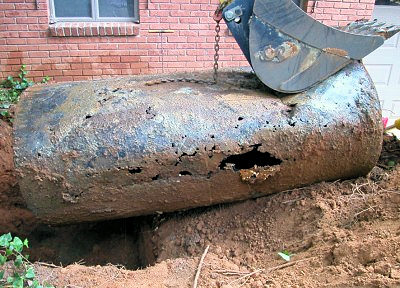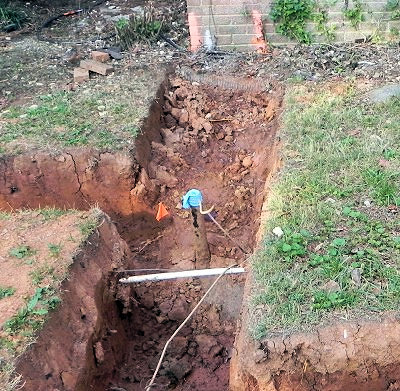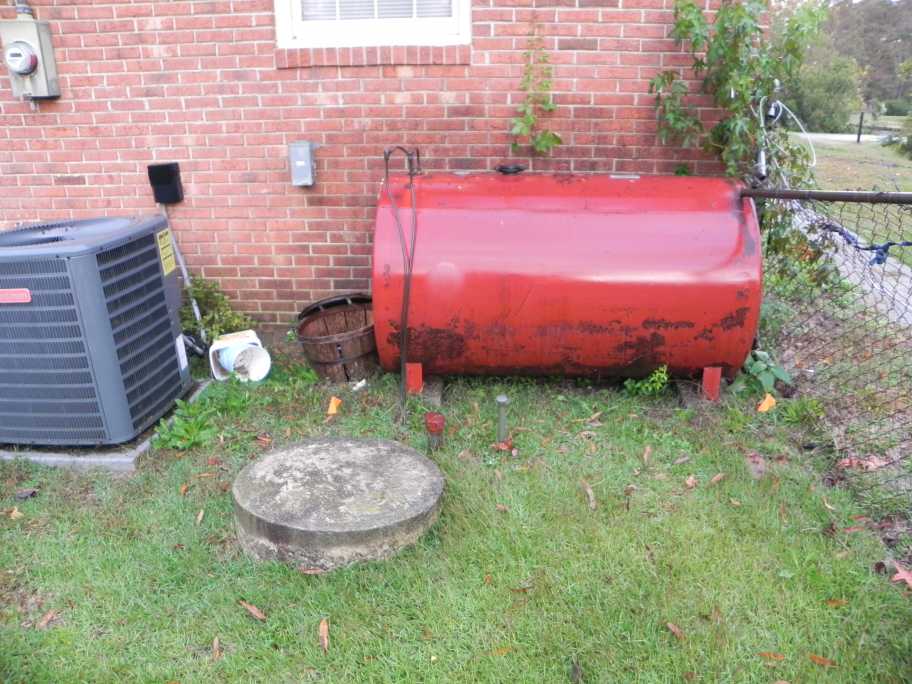Underground Oil Tank Removal
What must be done.
Tanks defined by the State of North Carolina as residential heating oil tanks are not regulated, so underground oil tank removal, cleanup of contaminated soil, and environmental assessment work is usually not required for residential sites. Soil contamination from petroleum leakage must be reported to the State, and before a property with petroleum soil contamination can be conveyed, a Notice of Residual Petroleum (NRP) must be filed for the property. The NRP must be filed before the State will issue a Notice of No Further Action (NFA) for the release. Obtaining a NFA is commonly a minimum requirement for banks and buyers before a property is sold. However, if a property owner or prospective buyer wishes to avoid filing a NRP then removal of the leaking oil tank and excavation of the contaminated soil will be required. Additionally, prospective buyers, or financial institutions, or insurers, may require the removal of an oil tank, whether it has leaked or not.
High risk situations.
Certain site conditions are considered to be emergency or high risk factors by the State. These include:
- The presence of water supply wells, whether in use or not, within 150 feet of a leaking heating oil tank or 1,000 feet of a gasoline tank.
- The presence of oil or oil vapor in the crawlspace or basement areas of a residence.
- A surface spill or overflow from an oil tank.
In these cases, removal of the tank and excavation of contaminated soil will usually be required. Depending on other site factors, further environmental assessment may be required.
Site inspections are essential.
During a site inspection, Cedar Rock will assess site conditions that may require tank removal and/or other environmental cleanup and assessment work to satisfy State regulations, and will provide advice and recommendations for your situation. Underground tank removal disturbs the landscape significantly more than tank abandonment, so Cedar Rock normally recommends the proper abandonment of an underground tank, which ensures that the tank will not cause any new problems or worsen existing issues. When tank removal is required by the State or is requested, Cedar Rock will remove the tank and any contaminated soil with as little damage to the landscaping as possible.

Severely corroded 1,000-gallon underground oil storage tank being removed.
Tank removal procedure.
Underground oil tank removal typically requires access to the oil tank location with a backhoe. The tank is exposed and then cut open to allow removal of fluids and cleaning of the tank prior to its removal from the ground. If required, contaminated soil is excavated and transported to a permitted disposal facility. The average size excavation pit is about a 10 foot cube. The pit is then backfilled and tamped to grade, and the impacted yard is regraded, reseeded, and strawed. This process requires about one day to complete.
What to do next.
Your first step should be to have the property of interest inspected for the presence of underground oil tanks, and to determine whether they have leaked. Cedar Rock will then be able to advise you on the possible courses of action and the factors to be considered in deciding what must be done about the oil tanks. Cedar Rock provides services to remove underground oil tanks and to help satisfy State requirements so that a NFA can be issued.
Schedule a site inspection today to check for the presence of an underground oil tank and/or soil contamination on your property of interest. Call us at (336) 684-2734 or use our online contact form.

An underground oil tank was exposed under a new foundation trench. This required removal of the oil tank as it would not have the strength to support the extension foundation.

High risk situation. The underground oil tank fill and vent pipes are visible in front of the aboveground oil tank. This strongly suggests that the underground tank leaked and was replaced by the aboveground tank. The water supply well makes this a high risk property, whether or not the well is in use. The State will probably require removal of the tank, and the well will have to be properly abandoned unless the soil contamination is removed.

